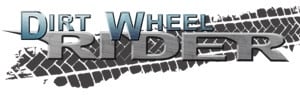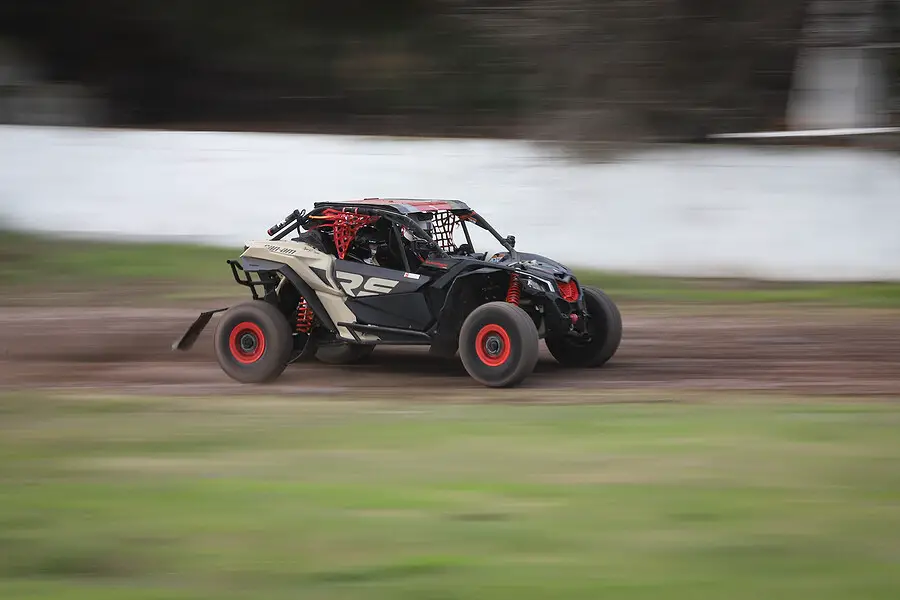
How much wood can a woodchuck chuck if a woodchuck could chuck wood? I don’t know but I do know that UTV or side-by-side four wheeler top speeds range from 25 to 80 mph depending on factors such as UTV type, engine size, horsepower and torque. Let’s take a deeper look at UTV speeds and elements that help them go fast!
UTV Speed Factors
Speed is the order of the day but in order to properly prepare this dish of thrills and fast pace there are a few key ingredients that have to be added to the mix! First we have horsepower which measures engine performance. This is the factor that directly impacts UTV top speeds. When horsepower is at a high you typically see high speeds accompanying. While more horsepower increases speed it also takes a bigger engine which effects our second factor, weight. Weight is our next factor because like it or payload (how much weight a UTV is carrying) plays a significant roll in how fast the UTV can go. This is especially the case for UTVs because they are designed to carry more passengers which of course is added weight by size of the four wheeler as well as added weight by the number of riders. The weight and engine size also effects our last 2 categories of speed factors, torque and aerodynamics. Torque is the force an engine generates that leads to acceleration. When torque is high acceleration speed is quicker which gets you to top speeds quicker. When weighted down, torque is countered by a heavier payload. Heavy torque is very necessary for better off-road and cargo hauling success but don’t expect a super quick takeoff when your weight is high. Lastly, aerodynamics plays a part in UTV speed. UTVs typically have bigger, broader frames than ATVs because they are built to carry and haul more in their multi-passenger design. This leads to increases in wind resistance which directly impacts speed!
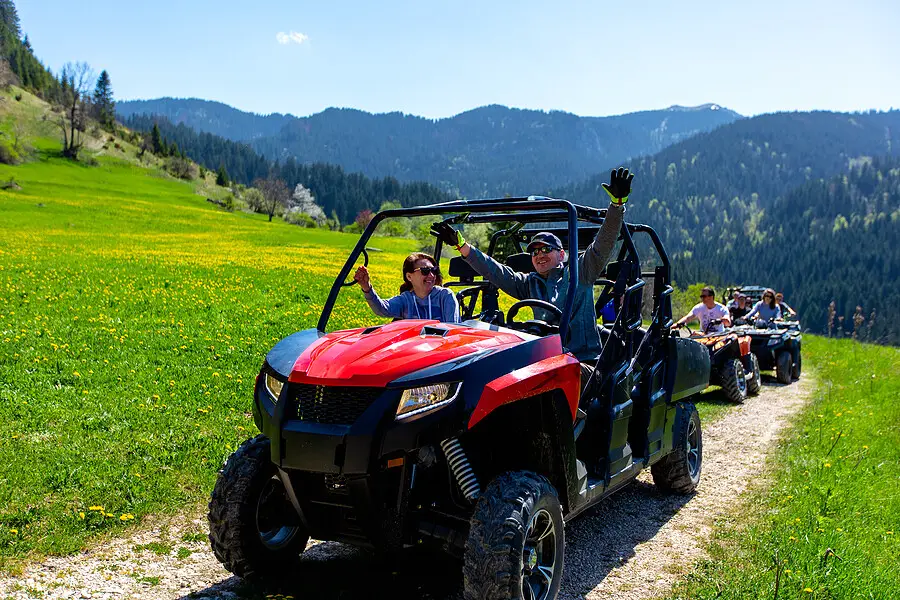
| UTV Type | Payload Capacity (lbs) | Seating Capacity | Engine Size (cc) | Average Price (USD) | Towing Capacity (lbs) | Top Speed (MPH) |
|---|---|---|---|---|---|---|
| Sport UTV | 300 – 800 | 2 – 4 | 800 – 1000 | $15,000 – $25,000 | 1,500 – 2,000 | 75 – 85 |
| Utility UTV | 1,000 – 1,500 | 2 – 6 | 500 – 1000 | $10,000 – $20,000 | 2,000 – 3,000 | 45 – 50 |
| Multi-Passenger UTV | 1,000 – 1,500 | 4 – 6 | 700 – 1000 | $15,000 – $25,000 | 1,500 – 2,500 | 50 – 80 |
| Youth UTV | 150 – 200 | 2 | 150 – 300 | $2,500 – $5,000 | 100 – 200 | 15 – 25 |
***Please take note that these values represent a broad range and your specific UTV can vary based on the manufacturer, model, and included features***
UTV Speed Comparisons
Now that we’ve cooked up some speed, let’s see how it is distributed amongst the four major UTV groups. First we look at the Youth UTV model which is limited in speed to promote handling and safety. These UTV types have enough torque and speed to get the job done but not much else. Lower horsepower (about 4 to 6 hp) and lesser torque keep top speeds ranging from 15 to 25 mph.
Utility UTVs are designed to haul, tow, assist, carry, navigate, and maneuver with task oriented functioning in mind. These side-by-side style four wheelers have horsepower around 50 to 80 hp and top speeds ranging from 45 to 50 mph. Part of the reason for a lesser speed is also in part to bigger engines for higher torque used in handling heavier loads and tumultuous terrains.
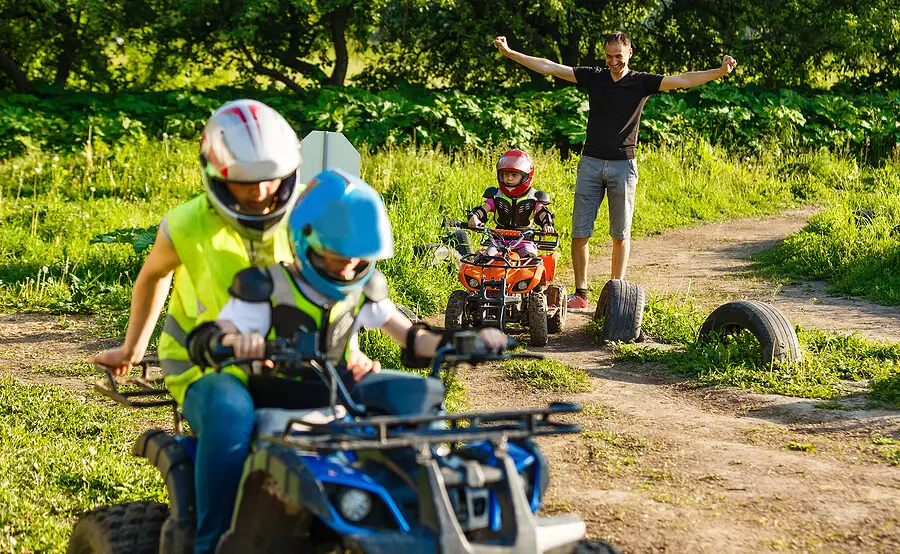
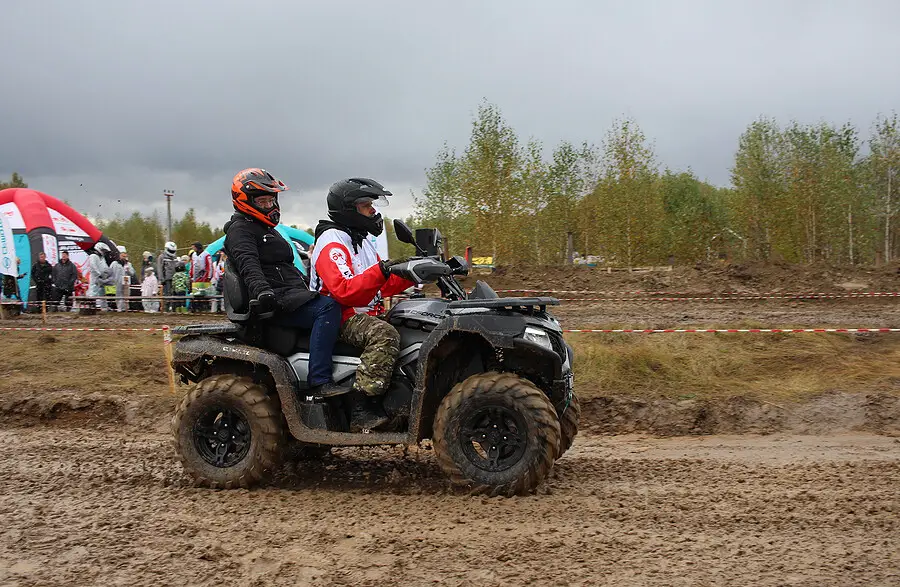
In similar fashion, the Multi-Passenger UTVs focus on the ability to move people and heavier cargo from point A to point B. Speeds are rangy for this UTV type but not as much as their horsepower. Speeds range from 50 to 80 mph while horsepower ranges from 50 to 100 hp.
Last is the greatest of all time or the “goat” of speed in the UTV world. The Sport UTV is designed and often times dedicated to having a higher performance ceiling in relation to speed. Greater horsepower (70 to 200 hp) and top speeds reaching 80 mph or better, the Sport UTVs are typically the fastest on the block! With sportier frames for better aerodynamic functioning along with high torque, Sport UTVs can get and go a little quicker and faster than its UTV counterparts.
No matter what you are riding remember to choose safety first. This is especially needed when you are not the only person riding but you have another rider riding alongside you in the cockpit. Knowing the differences in speed and how they are derived will help you determine how to be safe when selecting and riding a UTV style four wheeler. If speed is what you need, stay away from UTVs with heavier engines and larger frames unless they both contribute to how you want it function in the long haul.
